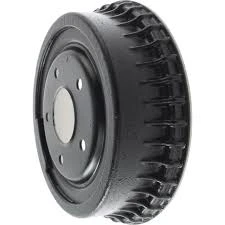
-
 Afrikaans
Afrikaans -
 Albanian
Albanian -
 Amharic
Amharic -
 Arabic
Arabic -
 Armenian
Armenian -
 Azerbaijani
Azerbaijani -
 Basque
Basque -
 Belarusian
Belarusian -
 Bengali
Bengali -
 Bosnian
Bosnian -
 Bulgarian
Bulgarian -
 Catalan
Catalan -
 Cebuano
Cebuano -
 Corsican
Corsican -
 Croatian
Croatian -
 Czech
Czech -
 Danish
Danish -
 Dutch
Dutch -
 English
English -
 Esperanto
Esperanto -
 Estonian
Estonian -
 Finnish
Finnish -
 French
French -
 Frisian
Frisian -
 Galician
Galician -
 Georgian
Georgian -
 German
German -
 Greek
Greek -
 Gujarati
Gujarati -
 Haitian Creole
Haitian Creole -
 hausa
hausa -
 hawaiian
hawaiian -
 Hebrew
Hebrew -
 Hindi
Hindi -
 Miao
Miao -
 Hungarian
Hungarian -
 Icelandic
Icelandic -
 igbo
igbo -
 Indonesian
Indonesian -
 irish
irish -
 Italian
Italian -
 Japanese
Japanese -
 Javanese
Javanese -
 Kannada
Kannada -
 kazakh
kazakh -
 Khmer
Khmer -
 Rwandese
Rwandese -
 Korean
Korean -
 Kurdish
Kurdish -
 Kyrgyz
Kyrgyz -
 Lao
Lao -
 Latin
Latin -
 Latvian
Latvian -
 Lithuanian
Lithuanian -
 Luxembourgish
Luxembourgish -
 Macedonian
Macedonian -
 Malgashi
Malgashi -
 Malay
Malay -
 Malayalam
Malayalam -
 Maltese
Maltese -
 Maori
Maori -
 Marathi
Marathi -
 Mongolian
Mongolian -
 Myanmar
Myanmar -
 Nepali
Nepali -
 Norwegian
Norwegian -
 Norwegian
Norwegian -
 Occitan
Occitan -
 Pashto
Pashto -
 Persian
Persian -
 Polish
Polish -
 Portuguese
Portuguese -
 Punjabi
Punjabi -
 Romanian
Romanian -
 Russian
Russian -
 Samoan
Samoan -
 Scottish Gaelic
Scottish Gaelic -
 Serbian
Serbian -
 Sesotho
Sesotho -
 Shona
Shona -
 Sindhi
Sindhi -
 Sinhala
Sinhala -
 Slovak
Slovak -
 Slovenian
Slovenian -
 Somali
Somali -
 Spanish
Spanish -
 Sundanese
Sundanese -
 Swahili
Swahili -
 Swedish
Swedish -
 Tagalog
Tagalog -
 Tajik
Tajik -
 Tamil
Tamil -
 Tatar
Tatar -
 Telugu
Telugu -
 Thai
Thai -
 Turkish
Turkish -
 Turkmen
Turkmen -
 Ukrainian
Ukrainian -
 Urdu
Urdu -
 Uighur
Uighur -
 Uzbek
Uzbek -
 Vietnamese
Vietnamese -
 Welsh
Welsh -
 Bantu
Bantu -
 Yiddish
Yiddish -
 Yoruba
Yoruba -
 Zulu
Zulu
brake drum swedge cutting tool
Understanding Brake Drum Swedge Cutting Tools
Brake drums are essential components of vehicle braking systems, serving to absorb and dissipate heat generated during braking. Over time, these brake drums can wear out, leading to the need for replacement or repair. One effective method of maintaining brake drums is through the use of a specialized tool known as a swedge cutting tool. This article will explore what swedge cutting tools are, their importance in automotive maintenance, and how they function.
What is a Swedge Cutting Tool?
A swedge cutting tool is a precision instrument designed to reshape or machine the surface of worn brake drums. Unlike traditional machining tools, swedge cutting tools are specifically engineered to address the unique contours of brake drums, making them ideal for restoring these critical vehicle components. Typically made of high-strength steel, swedge tools can withstand the intense stress and heat generated during the cutting process.
Importance of Swedge Cutting Tools
1. Restoration of Brake Performance Over time, brake drums can develop grooves, scoring, and uneven wear due to friction from brake pads. These imperfections can significantly reduce braking efficiency and performance. By using a swedge cutting tool, technicians can restore the smooth surface of brake drums, enhancing the contact area between the drum and brake pads. This leads to improved braking performance and safety.
2. Cost-Effectiveness Replacing brake drums can be expensive. In many cases, however, swedge cutting allows for the reuse of existing drums, reducing the overall cost of brake system maintenance. This approach is particularly beneficial for older vehicles or those with unique brake components no longer readily available in the market.
3. Environmental Impact Utilizing swedge cutting tools supports environmentally friendly practices by reducing waste. Instead of discarding old brake drums, which contributes to landfill growth, swedge cutting allows for refurbishment. This emphasis on repair over replacement aligns with sustainable automotive practices.
brake drum swedge cutting tool

How Swedge Cutting Tools Work
The operation of a swedge cutting tool is relatively straightforward, but it requires skill and precision. The following is a general overview of how these tools are used
1. Preparation Before using a swedge cutting tool, the brake drum must be removed from the vehicle. Technicians usually clean the drum to remove dirt and debris that could interfere with the cutting process.
2. Setup The swedge cutting tool is then mounted on a lathe or dedicated brake drum lathe machine. The drum is securely clamped into place to ensure it remains stable during cutting.
3. Cutting Process As the lathe spins the drum, the swedge cutting tool is slowly fed into contact with the drum's surface. The tool's design allows for controlled cutting, effectively removing any worn material and reshaping the drum. The operator monitors the process closely to ensure even cutting and to prevent over-removal of material.
4. Finishing Touches Once the cutting is completed, technicians will often check the drum’s thickness and runout to ensure it meets manufacturer specifications. After final adjustments, the drum is cleaned once more before being reinstalled on the vehicle.
Conclusion
In summary, brake drum swedge cutting tools play a vital role in automotive maintenance by restoring the functionality of brake systems. Their ability to efficiently repair worn drums not only enhances vehicle safety but also provides cost-effective and sustainable solutions for vehicle owners. As automotive technology continues to evolve, the importance of such specialized tools in maintaining and optimizing vehicle performance cannot be overstated. Whether in professional garages or DIY workshops, understanding and utilizing brake drum swedge cutting tools is essential for any mechanic dedicated to providing high-quality maintenance and repair services.
-
Rear Drum Brakes Maintenance TipsNewsAug.04,2025
-
Key Components Affecting Brake Drum FunctionNewsAug.04,2025
-
Important Inspection for Truck Drum BrakeNewsAug.04,2025
-
How to Prepare for Changing Rear Drum BrakesNewsAug.04,2025
-
Essential Tools for Cleaning Drum Brakes ProperlyNewsAug.04,2025
-
Brake Drum Function GuideNewsAug.04,2025
-
Safety Features of Red Brake DrumsNewsAug.01,2025
